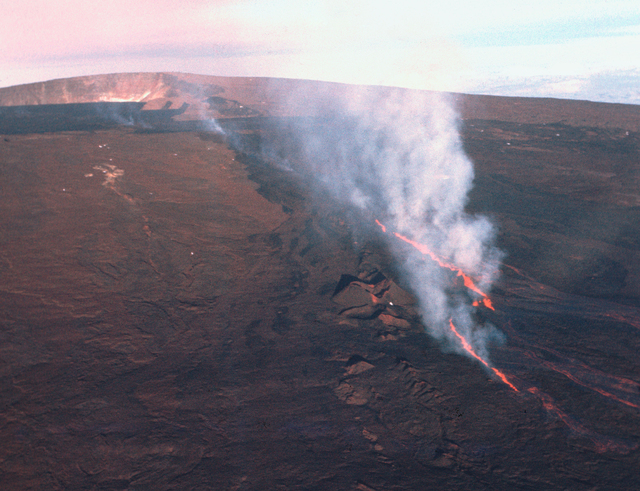There’s still rumbling in the belly of the giant that covers half of the Big Island, however, geologists still cannot say if and when Mauna Loa will next erupt. ADVERTISING There’s still rumbling in the belly of the giant that
There’s still rumbling in the belly of the giant that covers half of the Big Island, however, geologists still cannot say if and when Mauna Loa will next erupt.
“We can’t really predict if this is ultimately going to result in an eruption. All that we can say is there is more activity than when the volcano is asleep,” said Frank Trusdell, a U.S. Geological Survey Hawaiian Volcano Observatory geologist who has studied Mauna Loa extensively and was present for its last eruption in 1984.
Since Sept. 17, when scientists at the observatory upped the Volcano Alert Level for Mauna Loa from “normal” to “advisory,” elevated seismicity within the volcano and deformation across its flanks persist, he said.
Mauna Loa, which normally sees up to 10 earthquakes per week, continues to average about 40 earthquakes per week, Trusdell said, adding “we’re kind of hovering around that, (but) some days we go below and some days we exceed it. In 1984, (before Mauna Loa’s last eruption) we were talking several hundred earthquakes per day.”
In addition to the seismicity, which for the most part is occurring at depths less than 5 kilometers below the summit, deformation consistent with inflation continues, he said, noting it could be indicative of magma accumulating in sub-storage reservoirs. During inflation, magma rises into the summit reservoir; the summit reservoir enters the deflation portion of the cycle when the magma moves laterally into a rift zone and either erupts or is stored there.
Scientists use two GPS stations at Mokuaweoweo Crater to measure deformation. Current inflation is ranging from a few millimeters in some areas to as much as 3 centimeters in others. In 1975, deformation monitoring, which used lasers and was not as advanced as today, indicated 30 centimeters of change in the months before Mauna Loa erupted and in 1984, a change of almost 60 centimeters was recorded.
“Imagine two points on a balloon and when you blow in more air, the two points move farther apart. That’s what we are seeing — albeit, we’re talking small, small changes,” he said, adding the inflation of Mauna Loa is also triggering the small earthquakes.
“Imagine that balloon in a box and start blowing it up. The balloon is then pressing against the side of the box, and because it’s rock (in Mauna Loa’s case), you’re getting some stresses on the rock that is being reflected in small earthquakes.”
The mountain last saw seismicity and inflation pick up around 2002 that continued until about 2009, but the volcano did not erupt. When the inflation slowed to background levels in early 2010, the status of Mauna Loa was returned to “normal.”
“In the past, there were times where we raised the code and that the volcano kind of went to sleep, so, we retreated,” Trusdell said. “But, sometimes this may be a precursor thing that will extend over a year or two.”
The past Mauna Loa eruptions have sent lava toward Hilo, South Kona, Ka‘u and Kiholo Bay, as well as other areas in between. Though, based on historical data, Mauna Loa’s eruptions commence at the summit, it’s hard to say which, if any, of its rift zones would be activated in a future eruption.
Scientists will continue to monitor the volcano, and will notify emergency managers, as well as the public, if significant changes are detected.






